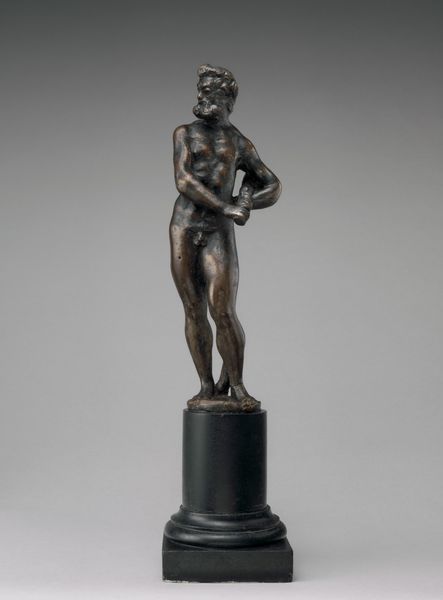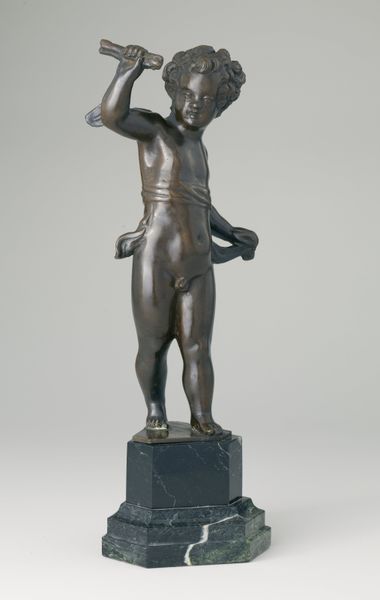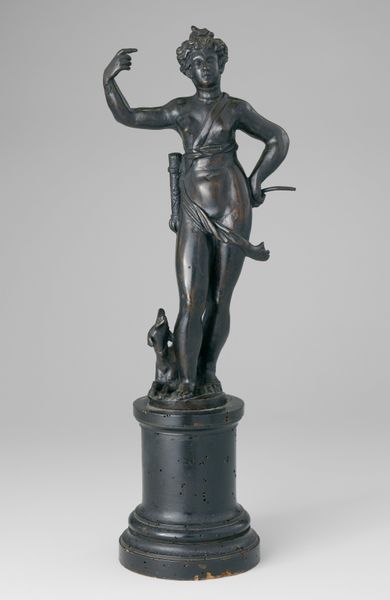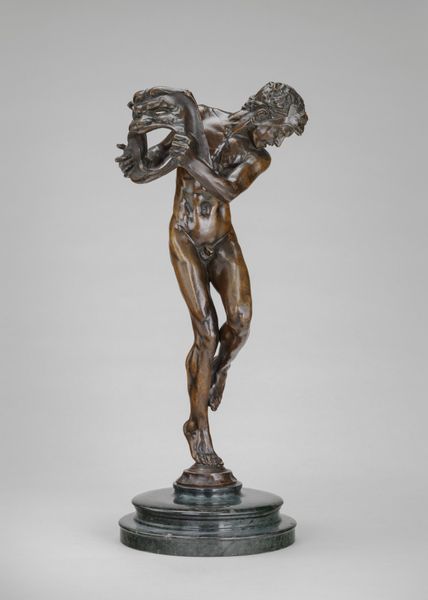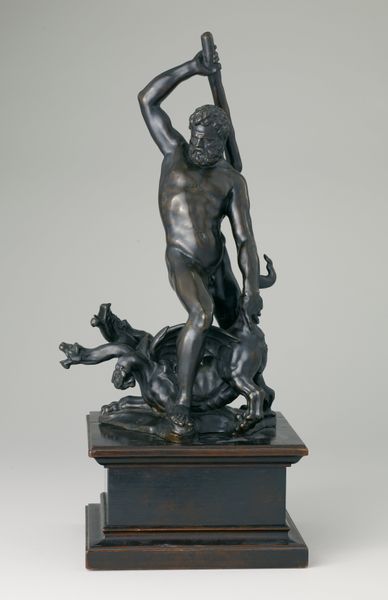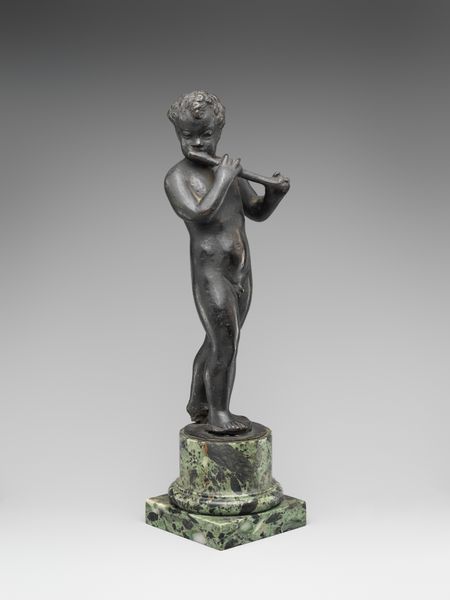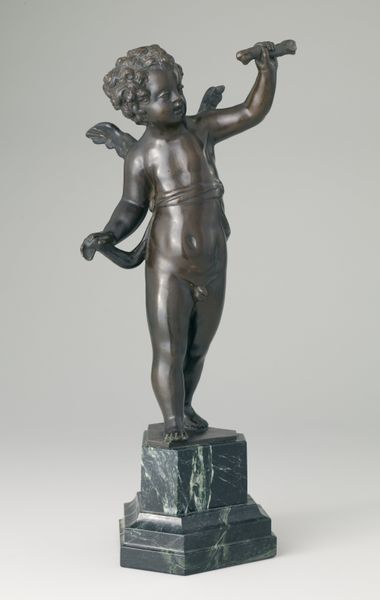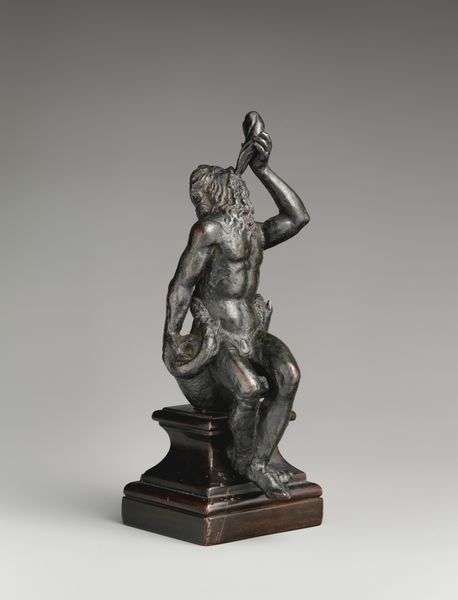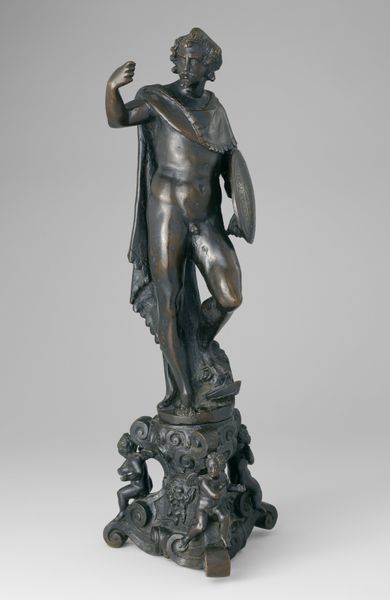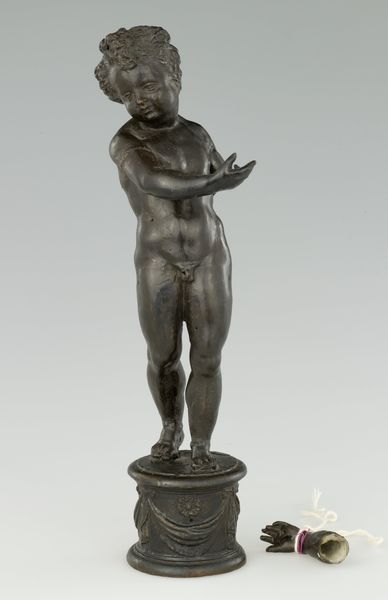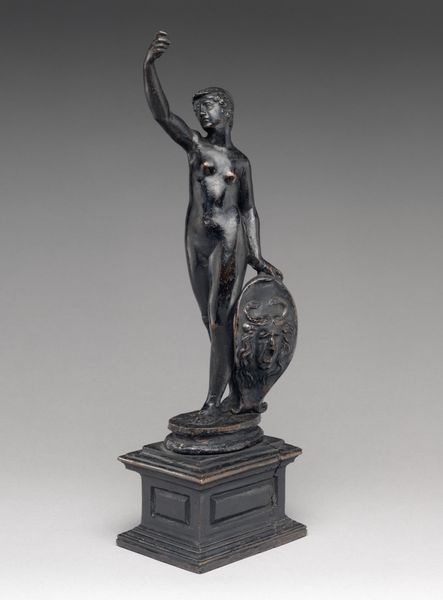
bronze, sculpture
#
sculpture
#
bronze
#
mannerism
#
figuration
#
sculpture
#
history-painting
Dimensions: 17 3/4 x 5 1/8 x 5 1/8 in. (45.09 x 13.02 x 13.02 cm)
Copyright: Public Domain
Curator: What stands out to you about Girolamo Campagna's bronze sculpture, "Juno with Peacock," from the 16th century? Editor: It's the smoothness of the bronze that I initially notice. Juno appears so elegant and self-assured next to her peacock companion. What aspects of the sculpture particularly resonate with you? Curator: The choice of bronze is key. Bronze allowed for multiples; it facilitated wider circulation of the image and its associated ideology to elites during the Renaissance. Where was it produced, do you think, and for what consumption? How does its form enable certain ways of valuing materials and labour? Editor: The detail in the casting and chasing of the feathers of the peacock are incredibly crafted, implying Venetian Republic origin due to the presence of bronze workshops. How would you say that the production impacts its meaning? Curator: Precisely! Venice had the workshops and the markets. The goddess’s calm demeanour combined with the preciousness of the bronze speak to an appreciation of the social hierarchy. The sculpture itself, as an object, performs social work for its patron by affirming luxury, learning, and classical myth. Where might such a sculpture been displayed in 16th century Venice? Editor: Probably within an aristocratic residence... perhaps even outdoors! Thanks to our chat, now when I see this piece, I don't only consider the art, but the historical conditions and cultural environment that shaped the materiality and production of the piece! Curator: Indeed, that bronze cast has so much to reveal! Examining the materials and means of its creation opens new avenues for understanding its purpose and influence on the society.
Comments
No comments
Be the first to comment and join the conversation on the ultimate creative platform.
